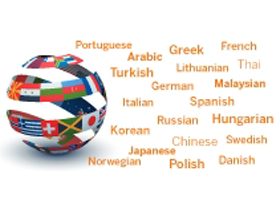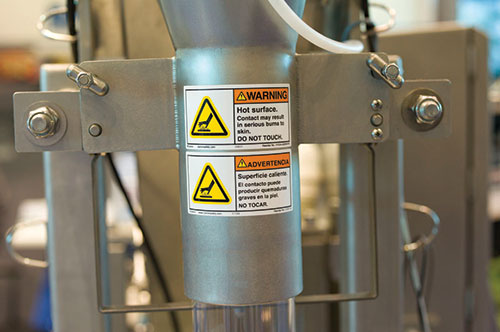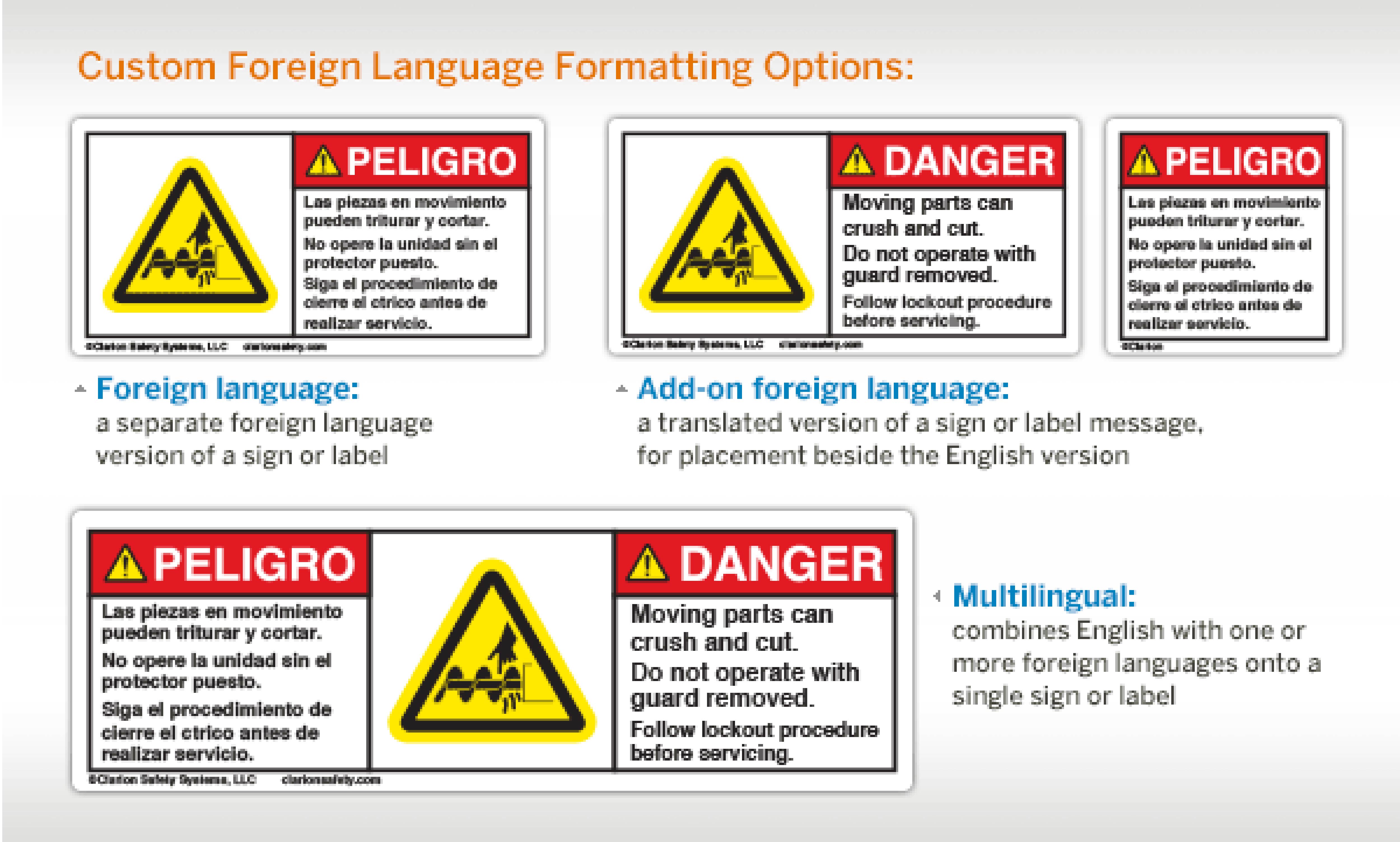Word Choice in the Multicultural Workplace
Posted by Geoffrey Peckham | 4th May 2016

Deciding which words to use on your safety signs and labels, and then which languages to use, can be difficult for both facility owners and manufacturers of products used in the workplace (like machinery). If you know that, say, English and Spanish are the only two languages spoken in a given setting, that makes things easy, for now. But how about the future? Workforces change.
Many parts of the world are increasingly becoming melting pots of people from various countries. As I write this, Europe and the U.S. are among the places trying to cope with an enormous tragedy: the Syrian civil war. Hundreds of thousands of refugees are fleeing Syria’s borders to find safety, jobs and permanent living arrangements in other countries. Are your safety signs and labels in Arabic? They may soon need to be!

From a safety communication perspective, the problems inherent in word-based safety communication can be alleviated, to a degree, by the addition of globally standardized graphical safety symbols. And if an internationally standardized symbol doesn’t exist, established best practice drawing methods can be used to create new symbols.
At Clarion, we routinely develop new symbols and incorporate them into safety signs and labels that meet the specific needs of our customers. We also produce translated versions of signs and labels every day. And I’m not talking just Spanish here; we routinely produce our products in over 30 different languages. We offer a variety of formatting options as well.

Translations – that brings up another issue related to the use of words on safety labels. They have to be the right words; they must be readily understood by your intended viewer population, at their lowest reading level and in their language. If translations are to be used, it goes without saying that they have to be accurate. This begins by choosing words that are right, in the first place, and also choosing words that can be easily translated. Sometimes this is easier said than done. Some industries have their own vocabularies and sometimes this vocabulary changes depending on the country, the culture and the language being used. Such language-based problems can be lessened to a large degree by choosing a reputable translation company who understands your industry and/or similar industries. At Clarion, we’ve developed solid working relationships with several of the best translation companies in the world, and this has proven incredibly helpful to our clients and our shared goal of reducing risk and protecting people.
Geoffrey Peckham
CEO, Clarion Safety Systems

This blog is part of a series of regular posts from our CEO, Geoffrey Peckham, to share his insight. Geoffrey serves as chair of the ANSI Z535 Committee for Safety Signs and Colors and chair of the U.S. TAG to ISO/TC 145 – Graphical Symbols. He has also been selected as a member of the U.S. TAG to ISO/PC 283, an ISO committee writing a new standard, ISO 45001 Occupational Health and Safety Management Systems, which will, when finished, define global best practices for workplace safety. In addition, he is an active member of many industry-specific standards committees related to safety signs and labels for buildings, ships, machinery and products.